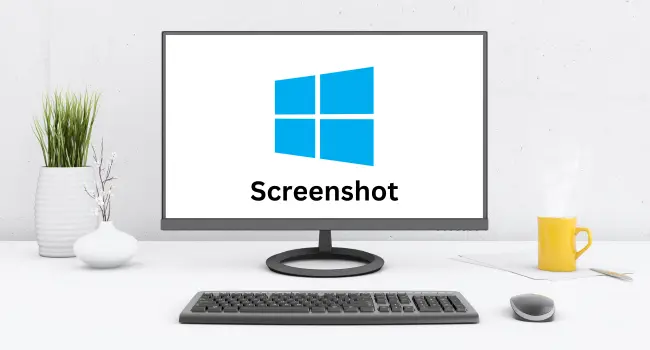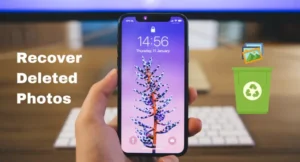So, you’ve taken a screenshot on your Windows computer, and it disappeared. You tried finding it but failed. Many users find themselves in this situation, scratching their heads in confusion. Worry not! I’m here for your rescue. In this article, I’ll guide you step-by-step to find where your screenshots are saved on Windows 10 and Windows 11.
Without any more delay, let’s quickly start your screenshot hunt.
Where Are Screenshots Saved on Windows 10 and Windows 11 by default?
By default, Windows 10 & 11 saves your screenshots in a folder conveniently named “Screenshots.”
Open File Explorer: To access your files and folders, open File Explorer. You can do this by clicking the File Explorer icon in the taskbar or by pressing Windows+E on your keyboard.
Navigate to “This PC”: In the left panel of File Explorer, you will see “This PC” or “My PC” listed. Click on it to access your computer’s storage.
Access the “Pictures” Folder: Inside “This PC,” you’ll find a list of folders. Look for the “Pictures” folder and click on it.
Open the “Screenshots” Folder: Within the “Pictures” folder, you should see a subfolder called “Screenshots.” Click on it to view the contents.
View Your Screenshots: Now, you’ll see all the screenshots you’ve taken using the default methods, such as PrtScn or Windows+Shift+S. You can open, copy, or organize your screenshots from this location.
How to take, save, and find screenshots on Windows 10 and Windows 11?
1. Using Windows + PrtSc (Print Screen):
Take the Screenshot: Press the Windows and PrtSc (Print Screen) keys simultaneously to capture the entire screen.
Access the “Screenshots” Folder: Open the “File Explorer” by clicking on the folder icon in the taskbar or pressing Windows + E. In the left panel, click on “This PC” or “My PC,” then look for and click on “Pictures.” Inside the “Pictures” folder, you’ll find a subfolder called “Screenshots.” Click on it to access your captured screenshots.
2. Using the Snipping Tool:
Open the Snipping Tool: Type “Snipping Tool” into the Windows search bar and select the app from the search results.
Capture the Screenshot: In the Snipping Tool, click on “New” to initiate the screenshot capture. Select the area of the screen you want to capture.
Save the Screenshot: After capturing the screenshot, click on “File” in the Snipping Tool, and then select “Save As.” Choose a location to save the screenshot and provide a name for the file. Click “Save.”
3. Using other methods (e.g., third-party software or keyboard shortcuts):
Identify the Capture Method: Determine how you took the screenshot, whether it’s through specific third-party software or using a keyboard shortcut other than Windows + PrtSc.
Check Clipboard (if applicable): If you used a keyboard shortcut or method that copies the screenshot to your clipboard, you can paste it directly into an application like Paint or Word. Press Ctrl + V to paste.
Check the Capturing Software: If you used third-party software to capture the screenshot, open that software. Look for a “Library,” “Recent,” or “History” section within the software’s interface. You will find your captures stored there.
Use Windows Search (if needed): If you’re unsure where the screenshot is saved, and none of the above steps works, you can use the Windows search feature. Enter keywords from the screenshot’s content or the date it was taken in the Windows search bar to help locate it.
How to Customize Screenshot Location in Windows?
Before customizing the screenshot location, take a screenshot using the Windows + PrtScn shortcut on your keyboard. This step ensures that Windows recognizes your intent to capture a screenshot.
For Windows 10:
Click on the Start button, type “Snip & Sketch” in the search bar, and select the app from the search results.
In Snip & Sketch, click on the three horizontal dots (ellipsis) located in the top-right corner of the app window.
From the dropdown menu, click on “Settings” to access the settings options for Snip & Sketch.
In the “Settings” menu, you’ll find the option “Save Snips to.” Click on it.
In the “Save snips to” settings, you can now choose a new location for saving your screenshots. Click on the drop-down menu next to “Save Snips to” to browse and select a different folder or location.
After selecting the desired folder or location, confirm your choice. The screenshots you capture using Snip & Sketch will now be saved in this customized location.
You can now close the Snip & Sketch app. Your settings are saved, and any future screenshots taken with Snip & Sketch will be stored in your chosen location.
For Windows 11:
Press Windows + S to open the search bar, type “Snip & Sketch,” and select the app from the search results.
In Snip & Sketch, click on the three horizontal lines (hamburger menu) located in the top-left corner of the app window.
From the dropdown menu, click on “Settings” to access the settings options for Snip & Sketch.
Look for the “Save snips to” option in the settings.
In the “Save snips to” settings, you can now choose a new location for saving your screenshots. Click on the drop-down menu next to “Save Snips to” to browse and select a different folder or location.
After selecting the desired folder or location, confirm your choice.
You can now close the Snip & Sketch app. Your settings are saved, and any future screenshots taken with Snip & Sketch will be stored in your chosen location.
By following these steps, you can easily customize the screenshot location in Windows 10 and Windows 11. This allows you to organize your screenshots according to your preferences, making them easier to find and manage.
Conclusion
So, you have now seen where your screenshots are saved on Windows 10 and 11.
Taking screenshots is an important feature, but it’s even more important to know where to find them. In Windows 10 and Windows 11, the default location is in the “Screenshots” folder within your “Pictures” directory. However, you can easily customize this location to suit your preferences.
Now, go ahead and capture screenshots without worrying about losing them in your computer’s storage.
FAQs
Yes, you can. When customizing the save location, simply choose a folder on your external drive, and Windows will save your screenshots there.
Press the “PrtScn” (Print Screen) key on your keyboard to capture the entire screen. In Windows 10, this will save the screenshot in the “Screenshots” folder, while in Windows 11, it will copy it to your clipboard.
Absolutely! You can create subfolders in the “Screenshots” directory to help you organize your captures more effectively.
You can use the “Snip & Sketch” app or the “Snipping Tool” to capture specific windows or portions of the screen. These tools provide more control over your screenshots.
No, third-party screenshot tools often allow you to choose your preferred save location. Check the settings of the specific tool you’re using to customize where your screenshots are saved on Windows.




